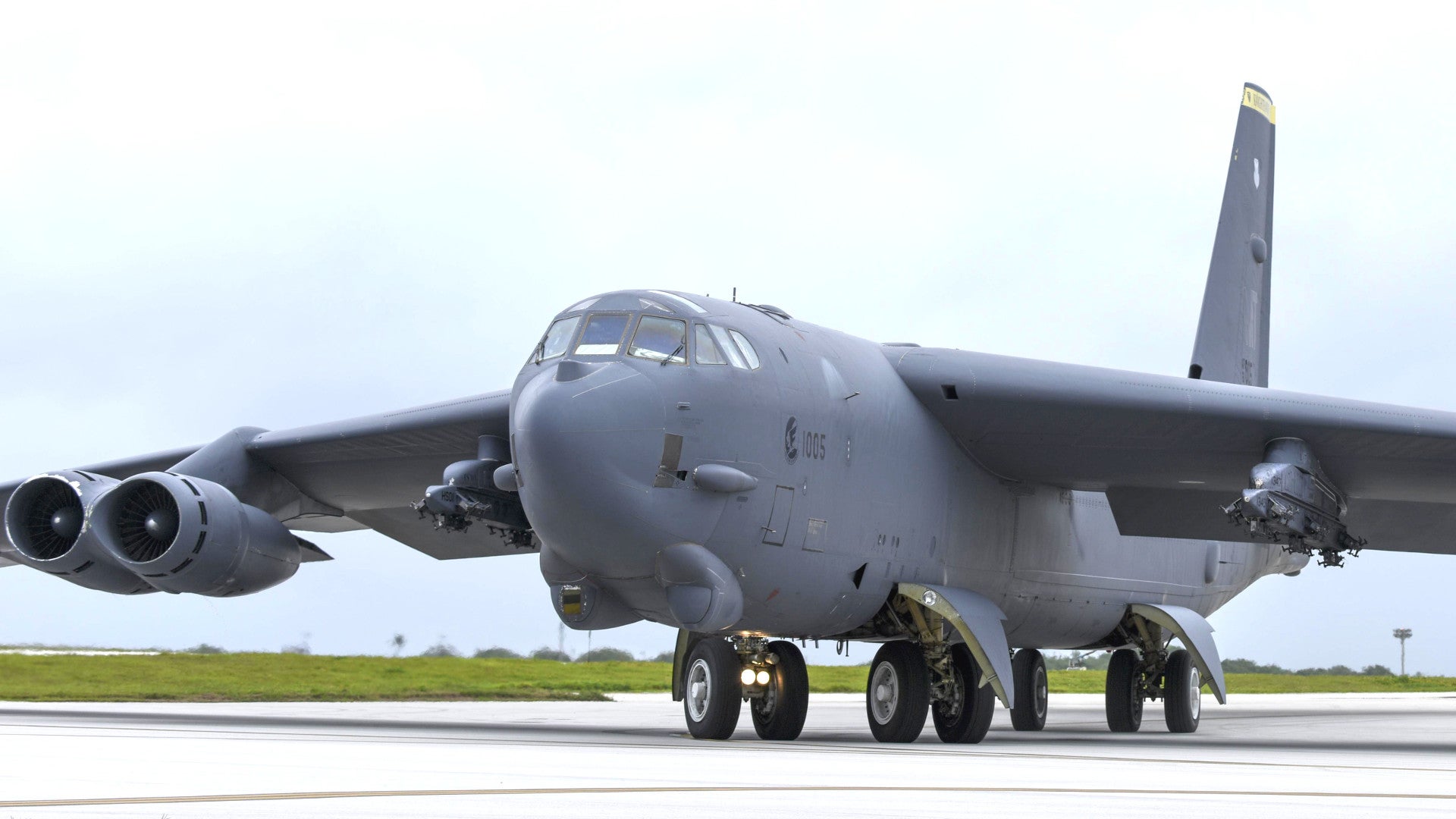The U.S. Air Force’s top officer General David Goldfein says the service is preparing to possibly put some of its nuclear capable bombers back on 24-hour alert for the first time in more than 25 years. With a major Pentagon-wide review of how the U.S. military positions its nuclear forces in process, it’s unclear how likely it is that this plan will ever come to fruition, especially given that it would require significant funding and other resources, could increase the risk of accidents, force reductions in other parts of America’s nuclear triad and the B-52’s community’s conventional weapons training regimen, and provoke unwelcome responses from potential opponents, including Russia and North Korea.
Goldfein talked about the potential for bombers going back on a standby posture during an interview with Defense One’s Marcus Weisgerber during the course of a six-day visit to Barksdale Air Force Base in Louisiana earlier in October 2017. The base itself is home to the Air Force’s 2nd Bomb Wing and its B-52H Stratofortress bombers and has existing alert facilities, but no longer has any nuclear weapons on site. After the Soviet Union collapsed in 1991, the United States ended decades of having the aircraft, as well as B-1 Bones and B-2 Spirit stealth bombers, ready to go at a moment’s notice for a nuclear strike. The B-1s are now no longer nuclear capable at all.
“This is yet one more step in ensuring that we’re prepared,” Goldfein told Defense One. “I look at it more as not planning for any specific event, but more for the reality of the global situation we find ourselves in and how we ensure we’re prepared going forward.”
When the outlet asked for clarification, other officials reportedly explained that there was no actual alert order, but that the Air Force was making preparations in case it came down from U.S. Strategic Command, which has responsibility for nuclear operations, or U.S. Northern Command, in charge of safeguarding the continental United States.
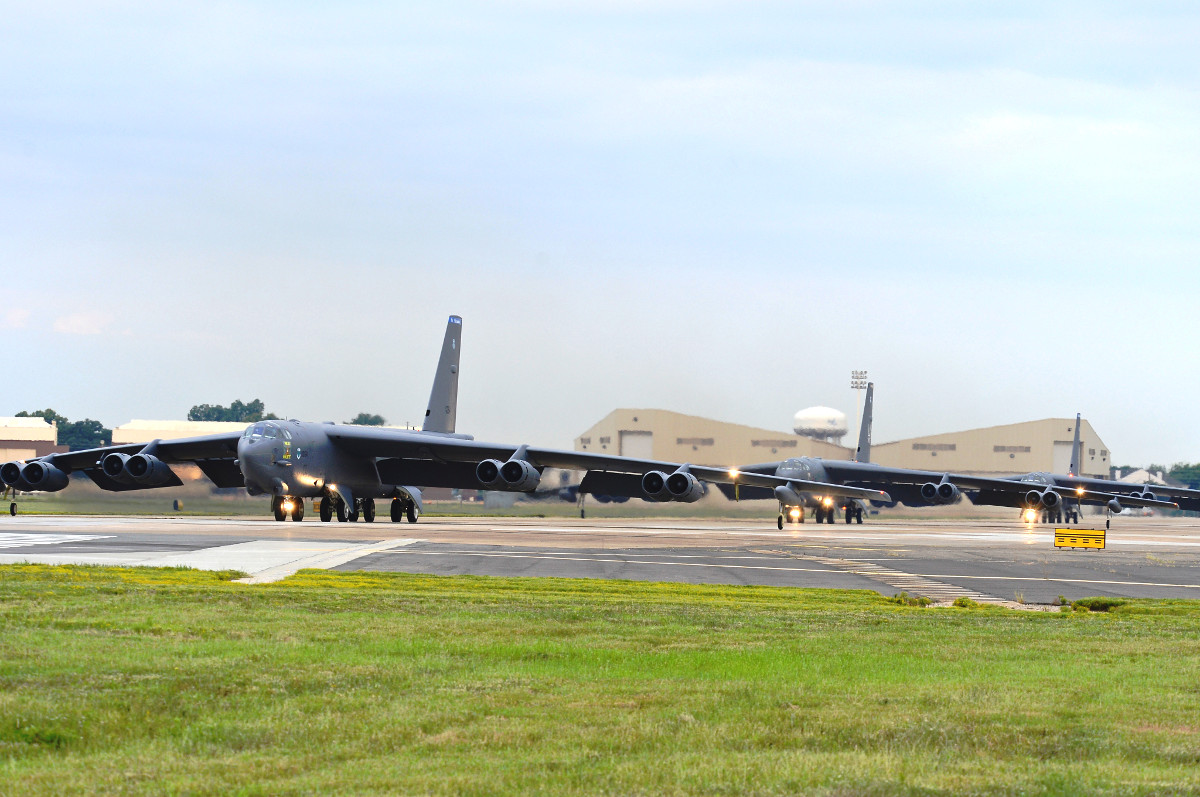
It seems likely, given Goldfein’s comments, that placing bombers back on 24-hour alert is under discussion as part of the Pentagon’s latest Nuclear Posture Review, which began in April 2017. Of course, that the concept is under consideration would not necessarily be an indication of the likelihood of the U.S. military putting the plan into action. In the past six months, Secretary of Defense James Mattis himself has publicly gone back and forth about supporting the possibility of eliminating one of the three legs of the nuclear triad, which includes the nuclear-capable bombers, ballistic missile submarines, and land-based intercontinental ballistic missiles (ICBM).
“Really it depends on who, what kind of behavior are we talking about, and whether they’re paying attention to our readiness status,” Goldfein said when asked about whether or not the alert posture would help deter potential enemies. “I’ve challenged…Air Force Global Strike Command to help lead the dialog, help with this discussion about ‘What does conventional conflict look like with a nuclear element?’ and ‘Do we respond as a global force if that were to occur?’ and ‘What are the options?’”

There could be benefits to having the bombers sitting at the end of the runway ready to go 24 hours a day. As we at The War Zone have noted before, this particularly leg of the triad remains one of, if not the most scalable and flexible in nature. Though not on 24/7 alert, B-52 crews routinely train to perform so-called “minimum interval take-off” operations to get multiple bombers into the air as quickly as possible in a crisis.
Unlike ballistic missiles, bombers have the ability to take up a visible position near a target area extended period, offering a very pointed deterrent without necessarily having to even fire a weapon. Since it takes time to get the aircraft into position to strike, commanders have additional time to divert them to other areas or abort their mission in response to rapidly changing situations. Bombers also present a far smaller infrared signature, which makes them harder for space-based early warning systems to spot and track compared to ballistic missiles.
Having the bombers sitting on their concrete alert pads at the end of the runway would be a very visible reminder of these capabilities to any opponent, which the United States could decide is an important signal in the face of an increasingly assertive Russia or an increasingly belligerent North Korea, the latter of which routinely threatens to use its small, but significant nuclear arsenal. The alert posture would simply speed up the existing ability of the bomber force to respond to any contingency, as well.
This rapid response capability could be important if the United States has to consider a more limited nuclear strike in the future. There have been reports that Russia may have adopted its own more flexible approach to the use of tactical nuclear weapons, using them to “escalate to de-escalate” a conflict and limit the ability of major powers to respond. The U.S. military’s ability to have a more immediate and scalable nuclear response could be valuable in the aftermath of such an incident. Similarly, it could reduce the time necessary to a North Korean provocation or to follow through with an order for a preemptive strike.
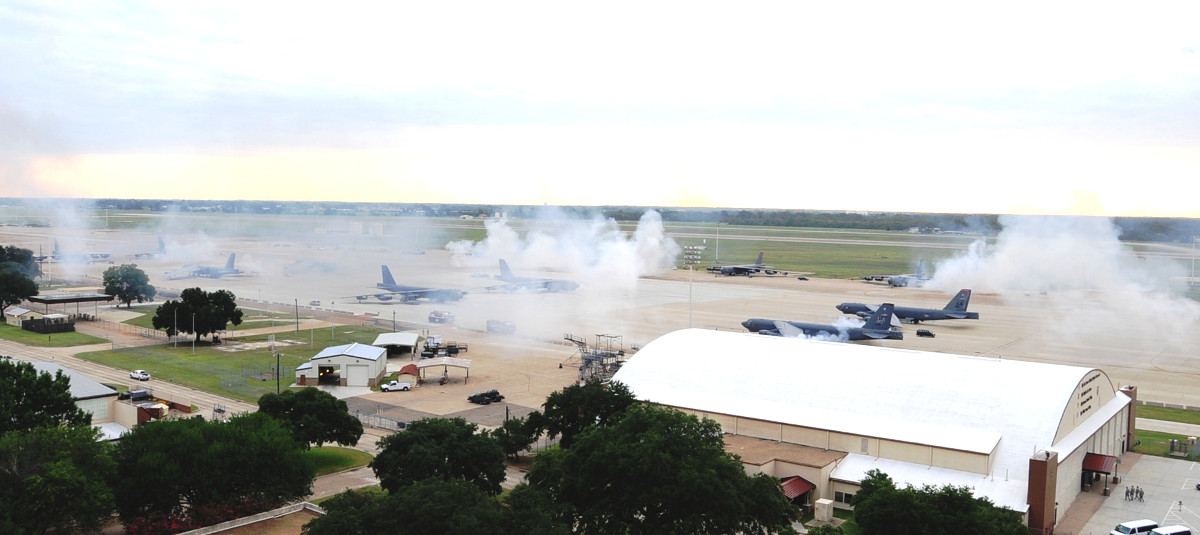
It could also help remind bomber crews of the importance of the nuclear mission and the need to properly train for it, which seemed to be slipping in recent years as the threat of a global nuclear war appeared to recede. In 2007, the Air Force infamously punished 70 personnel after an incident in which crews accidentally loaded six AGM-129 Advanced Cruise Missiles, each with a live W80 nuclear warhead, onto a B-52H that then flew from Minot Air Force Base in North Dakota to Barksdale. The weapons remained on the bomber for approximately 36 hours before anyone noticed they were missing from the secure storage bunker at Minot.
Having the bombers on alert, or even just suggesting the possibility, could just be way for Goldfein to make the mission more visible ahead of potential budget battles over funding for various bomber-related projects, including new engines for the B-52H and other upgrades, the procurement of the B-21 Raider with its top-secret cost estimates, and the LRSO. The Air Force may have decided to consider this change in deference to a direct request from President Donald Trump, who, through the White House, has already been directly involved in a number of high profile defense programs, most notably design changes to Air Force One.
“We won’t need an increase [in nuclear weapons], but I want modernization and I want total rehabilitation,” Trump said during shared remarks with Canadian Prime Minister Justin Trudeau on Oct. 11, 2017. “It’s got to be in tip-top shape.
But putting the bombers back on alert would also increase the potential for serious accidents simply by the law of averages. Since 1950, there have been 32 incidents involving nuclear weapons, which the United States calls “Broken Arrow” events, a not insignificant amount of which involved plane crashes or other aerial mistakes. In January 2014, an electrical fire during routine maintenance totaled a B-52H, forcing the Air Force to spend nearly 20 months getting another aircraft out of storage and back into flying condition.

Putting the bombers back on alert would undoubtedly require millions of dollars of upgrades to infrastructure and a significant reorganization of manpower resources, too. In particular, possible alert bases such as Barksdale no longer have stockpiles of nuclear weapons anymore and would need new bunkers, hardened against physical, electronic, and cyber attacks, to keep the warheads safe.
In addition, the Air Force would need to make sure the alert pads and other existing facilities are properly rehabilitated for daily use and secure against a range of threats that simply did not exist when the service built them in the first place, including increasing concerns about the potential for hostile actors to carry out illicit surveillance or even sabotage using small, commercially available quad- and hex-copter type drones. The service has already begun to repair the alert pads at Barksdale, in part in order to support the alert posture of command and control aircraft that support the nuclear mission such as the E-4B Nightwatch and the E-6B Mercury.
Beyond the physical improvements necessary, a large number of security personnel, trained to respond to possible nuclear incident and accidents, would have to stand watch 24 hours a day, as well. During a talk at the Air Force Association’s (AFA) annual Air, Space, and Cyber Conference in September 2017, retired U.S. Air Force General Roger Burg, who was previously in charge of 20th Air Force, the unit that still manages the service’s ICBM force, made clear his belief that these issues could be a major challenge if anyone ever decided to return bombers to a 24-hour alert posture.
“For those of you who watched us deploy B-52s behind three-strand barbed wire fence with 14 airmen with M16s guarding them, with nuclear weapons attached to their wings or inside their bomb bays, in today’s threat environment, would we really do that and have that be our day-to-day deployment for the bomber?” he said. “Very difficult problem to solve.”
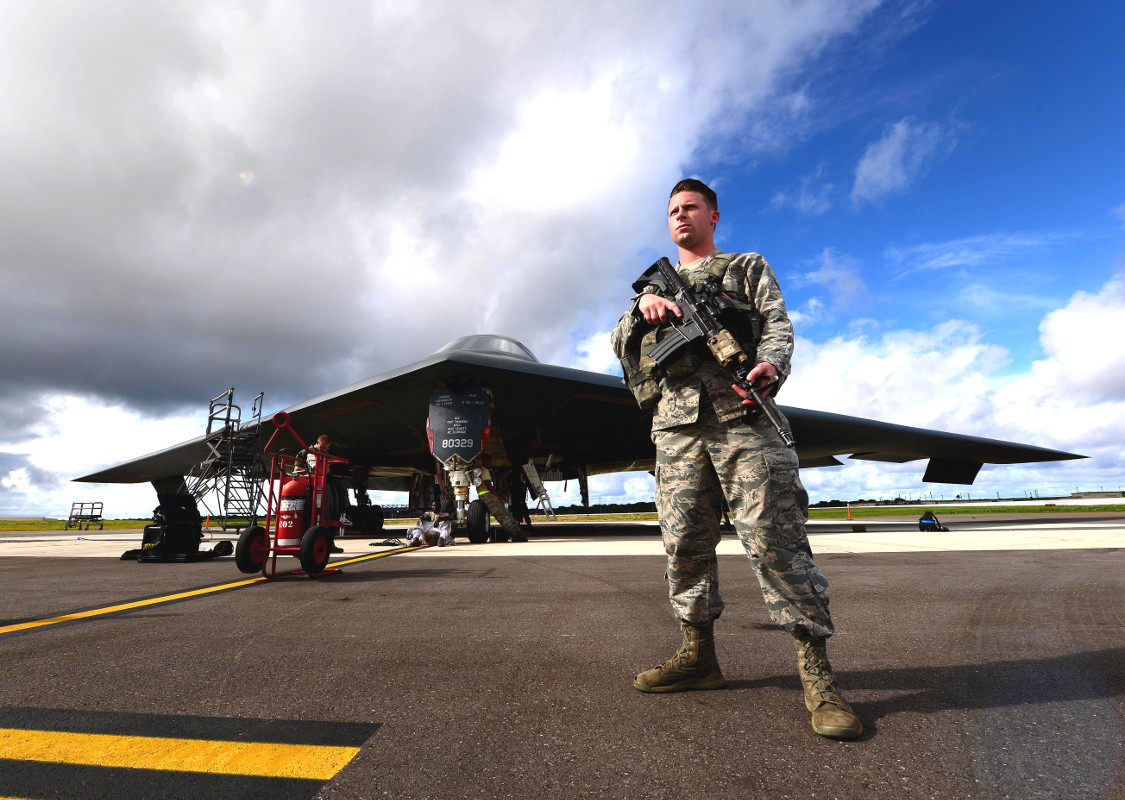
On top of that, every bomber on alert would be one less aircraft available for a conventional mission. The Air Force’s B-52H fleet makes up the bulk of the service’s nuclear-capable bombers and will continue do even after the first B-21 Raiders arrive, which may not even have an nuclear capability initially. There are already plans to keep the aging aircraft combat ready for decades to come.
The BUFFs have flexed their conventional capabilities in fighting ISIS in Iraq and Syria and more recently returned to the skies over Afghanistan to battle a resurgent Taliban and other militant organizations. A 24-hour alert would have to find a way to balance these demands against the more active nuclear mission.
“I want those bombers to be available for a lot of other things besides pulling nuclear alert duty,” Burg added at the AFA gathering. “They have proven their worth in war over the last 20 years, the value they bring to our joint force, as a precision weapons delivery platform. I don’t want us to not have that capability for the joint force.”
The added requirements of keeping bombers on an 24-hour alert could also just take time away from routine conventional and nuclear training requirements. Secretary of the AIr Force Heather Wilson depicted the existing requirements on many B-52 crews as onerous in her own remarks at the AFA conference in September 2017.

Strategic arms control agreements the United States has with Russia would only make this more complicated. At present, the U.S. military can only field a certain number of nuclear-capable bombers. As such, it would difficult, if not impossible to quickly add more long range strike aircraft to make up for a shortfall of B-52s available for conventional missions.
At the same time, those arrangement limit the two parties to a fixed number of nuclear warheads they can have actually attached to delivery platforms at any one time. Loading nuclear cruise missiles onto the aircraft would force American authorities to reduce the total number of warheads elsewhere, such as sending out submarines with less than a full load of ballistic missiles or emptying out some ICBM silos. At present, the Air Force is very actively promoting its plans for an all-new ICBM, a project known as the Ground Based Strategic Deterrent (GBSD), and it seems unlikely they would want to put themselves deliberately in a position that would threaten the program’s size, scope, and budget.
“I’ve spoken to a lot of bomber crews who love the fact that the IBCMs are on alert and they no longer are,” Burg noted at the Air, Space, and Cyber Conference as part of a vigorous defense of the ICBM mission. “They don’t have to be, but if the ICBMs were not on alert, we would probably have to put some bombers on alert.”
The question of available funding and resources is particular important when one considers that the Air Force already regularly highlights the burdens of decades of constant conflict and has resorted to desperate measures to solve a dangerous shortage of pilots. What Goldfein has already tacitly admitted is that, at least right now, putting bombers on alert would be adding a new set of costly requirements to the mix without any clear understanding of the benefits to America’s overall nuclear deterrent posture.
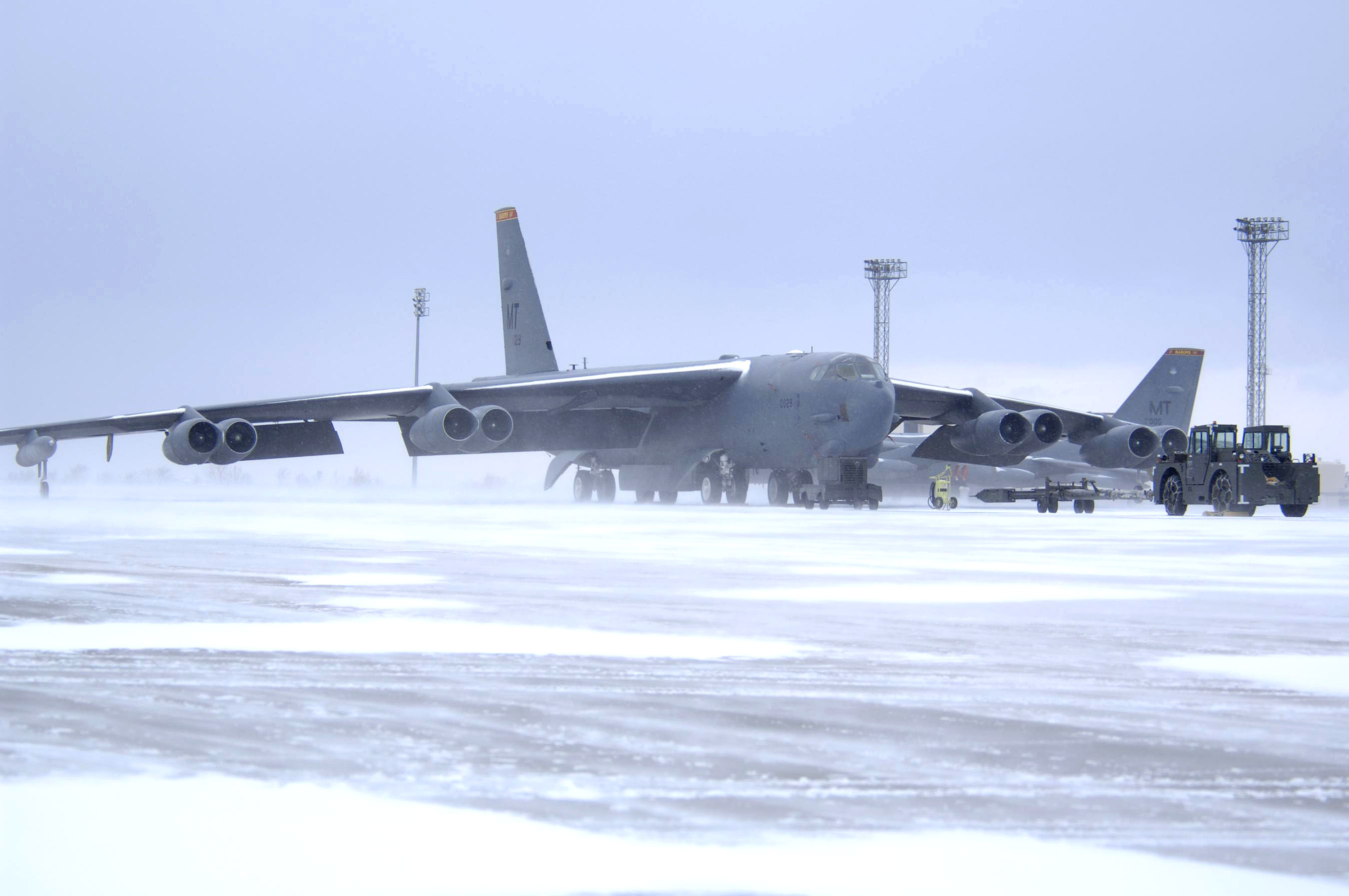
There is the distinct possibility that it could have an adverse effect. Another deal between the United States, United Kingdom, and Russia prevents the parties from flying long-range bomber patrols with live nuclear weapons. In August 2017, Russian President Vladimir Putin did say his country would restart patrols with nuclear-capable bombers, but it was unclear whether they would carry actual warheads.
“We have decided to restore flights by Russian strategic bombers on a permanent basis,” Putin said at the time. “Russia stopped this practice in 1992. Unfortunately not everybody followed suit. This creates a strategic risk for Russia … we hope our partners show understanding towards the resumption of Russian air patrols.”
He appeared to be referring to the existing American practice of routinely deploying B-52 and B-2 bombers overseas, both for training purposes and as shows of force, including in Europe. The United States understands itself to be abiding by the terms of the deal since no aircraft actually carries warheads during these missions.
If the Air Force did put its bombers on alert, it would almost undoubtedly draw criticism from Russia, as well as China, both of whom could easily follow suit. This would only increase the probability of accidents or other incidents worldwide. Just in September 2017, a Russian Tu-22M3 Backfire bomber skidded off the runway during an exercise.

“The world is a dangerous place and we’ve got folks that are talking openly about use of nuclear weapons,” General Goldfein told Defense One. “It’s no longer a bipolar world where it’s just us and the Soviet Union. We’ve got other players out there who have nuclear capability. It’s never been more important to make sure that we get this mission right.”
He’s definitely not wrong and makes sense to have both senior leaders and crews take a hard look at how they train for the nuclear mission. But, given the issues involved, the Air Force has a number of reasons to ultimately decide putting an actual alert posture back into place is simply not worth the time and money.
Contact the author: joe@thedrive.com
